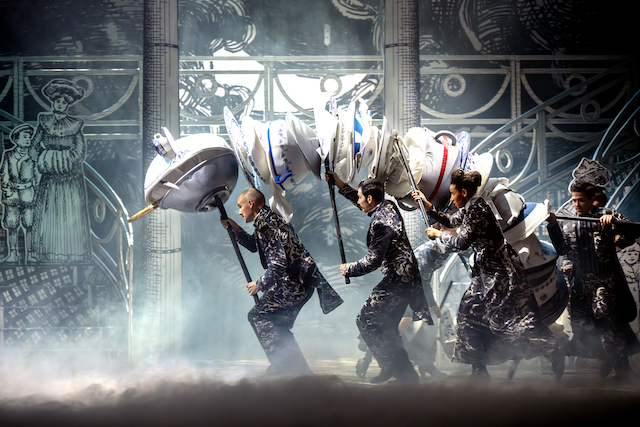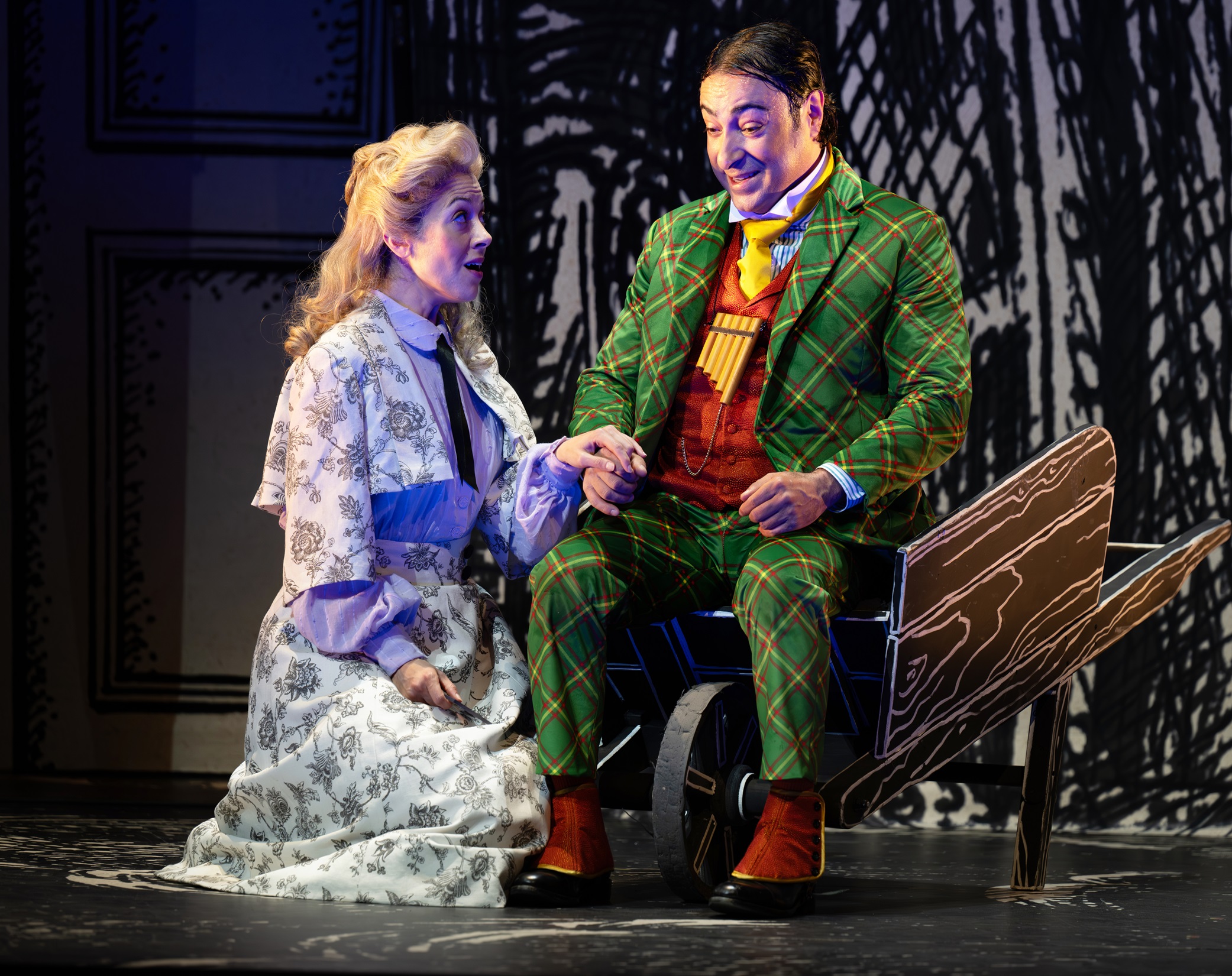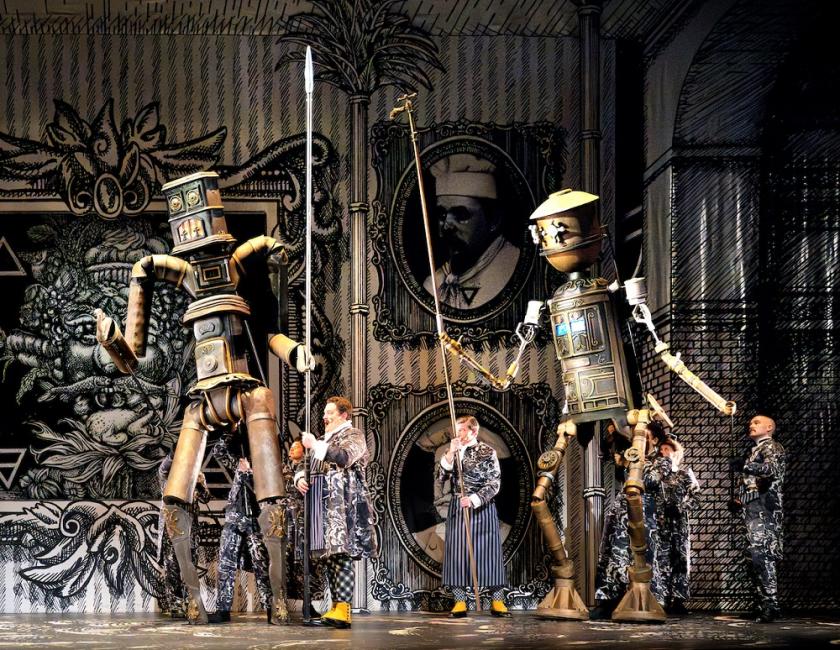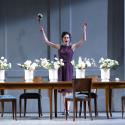Five years after it first clattered onto the Glyndebourne stage, André Barbe and Renaud Doucet’s visually exuberant Die Zauberflöte – featuring everything from dancing carcasses to a monster made out of blue-and-white crockery – continues to dazzle as much as it entertains.
Yet despite being a cornucopia of invention, it’s not always clear whether this production – set in a grand hotel kitchen at the turn of the 20th century – provides a solution to the opera’s problems, or simply eclipses them with decoration. Following a brief technical hitch at the start – in which a Glyndebourne official made perhaps the festival’s first ever reference to "The IT Crowd" by quipping that they’d turned the sound system “off and on again” – we watched as Tamino was attacked by the crockery monster. Initially tenor Paul Appleby was somewhat lacklustre as Tamino and was eclipsed by crystal glass clarity of the three ladies – Ann Toomey, Corinna Scheurle and Leia Lensing – who subverted the heroic ideal by saving him. Yet in the aria "Dies Bildnis ist bezaubernd schön (Such Loveliness Beyond Compare)" we started to get a sense of the rich honeyed nuance of his voice.
The Freemasonry references are there if you’re looking for them – not least in the all-seeing eye that’s incorporated into the hotel’s sign – but more key to the production is its determination to address the misogyny laced through the text. Part of this is successfully achieved through the inspired casting of American soprano Lauren Snouffer as Pamina, whose charismatic assertiveness and vivid fluent singing make it clear that no matter what the script says, here is a woman in charge of her life.  More clumsy is the dressing-up of female characters as suffragettes – a worthy sentiment, and one that’s true to the time evoked by the setting – yet it feels like it creates a parallel narrative, rather than resolving the text’s flaws. If the staging were more straightforward, it might work, yet the beguilingly playful aesthetic – for which Barbe himself has created ingenious pen and ink designs so that the whole production looks like a giant Pollock’s Theatre – demands different ways of asserting women’s strength.
More clumsy is the dressing-up of female characters as suffragettes – a worthy sentiment, and one that’s true to the time evoked by the setting – yet it feels like it creates a parallel narrative, rather than resolving the text’s flaws. If the staging were more straightforward, it might work, yet the beguilingly playful aesthetic – for which Barbe himself has created ingenious pen and ink designs so that the whole production looks like a giant Pollock’s Theatre – demands different ways of asserting women’s strength.
A more successful innovation of the production is to make the high priest Sarastro the all-powerful head chef of the bustling hotel kitchen. One of Barbe and Doucet’s main inspirations is the story of the cigar-smoking Viennese hotel manager, Anna Sacher, who inherited the famous Hotel Sacher from her husband Eduard, a great gastronome and son of Franz, inventor of the Sachertorte.
British bass James Platt takes the helm of a kitchen in which hybrids of dead animals leap out of pots – thanks to Patrick Martel’s puppet design – and the wall’s decorations include a fantastic reimagining of Giuseppe Arcimboldo’s 16th century painting "Vertumnus" (which portrayed the Hapsburg Emperor Rudolf II in vegetables). The stern, elemental tone of his voice allows him to cut an imposing otherworldly figure as he invokes the Egyptian deities Isis and Osiris while challenging Tamino and Papageno to progress towards enlightenment through surviving the ordeals he sets them.
 As Papageno, Russian baritone Rodion Pogossov initially seems a little unsteady comedically. But his performance picks up pace, not least in the outrageous moment when he’s reunited with Julieth Lozano Rolong’s Papagena (pictured right, with Rodion Pogossov), and they have sex (which generates a succession of babies as quickly as Polaroid photos). Alina Wunderlin, the German coloratura soprano standing in for Aleksandra Olczyk as Queen of the Night, brings out the power and complexity of music which, far more than the script, demonstrates what a formidable rival she is to Sarastro.
As Papageno, Russian baritone Rodion Pogossov initially seems a little unsteady comedically. But his performance picks up pace, not least in the outrageous moment when he’s reunited with Julieth Lozano Rolong’s Papagena (pictured right, with Rodion Pogossov), and they have sex (which generates a succession of babies as quickly as Polaroid photos). Alina Wunderlin, the German coloratura soprano standing in for Aleksandra Olczyk as Queen of the Night, brings out the power and complexity of music which, far more than the script, demonstrates what a formidable rival she is to Sarastro.
German conductor, Constantin Trinks, ably teases out the full nuance of the score with his sensitive pacing of the Orchestra of the Age of Enlightenment. Yet it’s ultimately the design that makes the greatest impression of the evening – not least in the final scene with its vast steampunk robots – and while this yields many moments of delight, all too often it detracts as much from the opera’s energy as it contributes.















Add comment